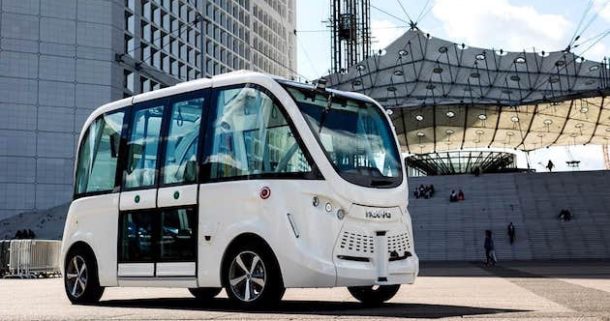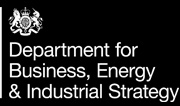
Event Review: Electric, Connected & Autonomous Vehicles in Manchester
Cities such as Manchester are about to experience a revolution in how people move around, with Electric, Connected & Autonomous Vehicles playing a key role. The University of Salford hosted a Connected & Autonomous Vehicles Conference which looked at how transport in Manchester – and other cities – is likely to change over the coming years…
CONNECTED AND AUTONOMOUS VEHICLES: REVOLUTIONISING MOBILITY IN SOCIETY
Rafael Cuesta, Head of Innovation, Transport for Greater Manchester (TfGM), talked about how Connected and Autonomous Vehicles will be revolutionising mobility in society. Rafael explained how there are currently around 2.8 million residents in Greater Manchester, split across 10 authorities, and this number is due to rise, along with the number of trips that people make. For a city that is already congested, new solutions are needed. Rather than driverless cars, Rafael expressed a preference for ‘carless drivers’ – which would help with parking issues as well as congestion.
However autonomous vehicles will play a part, and are due to be trialled as part of a new project called Synergy which is starting at the end of 2018. Project Synergy will operate connected autonomous cars in a platoon formation from Stockport railway station directly to the Arrivals terminal at Manchester Airport. A platoon of three pods will transit passengers to and from a car park in the airport to the passenger terminals. The interesting thing about this project is that the partners are primarily not traditional automotive companies – it’s new companies that are moving things forward.
The University of Salford is also running a course in Automotive & Autonomous Vehicle Technology (AAVT) and it even has its own autonomous shuttle vehicle, from a company called NAVYA. The University is planning to test this new vehicle, including on the roads around Media City, and so far there have been interesting conversations with insurance companies, who ask who is the main driver of the vehicle. When they’re told that the vehicle doesn’t have a driver, the insurers are somewhat confused. There have also been challenges with getting the vehicle registered with the DVSA, as it doesn’t have a steering wheel, although this issue is being resolved.
Rafael concluded by saying that Greater Manchester wants to be a living laboratory for innovative public transport solutions, and more funding for Connected and Autonomous Vehicles is heading in Manchester’s direction.
VEHICLE-TO-GRID TECHNOLOGY
Salford’s School of the Built Environment also has an Energy House, the only fully climate controlled research facility in the world.
Will Swan, Associate Dean of Research, Schools of Built Environment, University of Salford, explained how this facility is being used to test vehicle to grid (V2G) technology. For many years the energy model of a house has been based around the very simple concept of electricity and gas being fed in. That is all about to change, as new developments occur such as increasing numbers of electric vehicles.
The batteries of the EVs could act as an energy storage resource, and energy could be taken out and put back in to the home and the grid when needed. Such services could be provided by aggregators. One household feeding energy back into the grid when it’s needed may make £100 per year, but the sums involved become interesting when an aggregator facilitates this to happen with a million homes. Therefore there’s a significant opportunity for companies developing the intelligent, smart systems behind the aggregators.
Will also stated that there would be no new gas connections to houses after 2020, with the aim of trying to phase out gas by 2040; electrical heating will replace gas heating.
AUTONOMOUS VEHICLES & PUBLIC TRANSPORT – AUTONOMOUS SHUTTLES ALREADY TRANSFORMING SHARED MOBILITY
Jean-Baptiste Latil d’Albertas, Business Development Manager, NAVYA Autonomous Vehicles, described how autonomous shuttles are already in use throughout the world. NAVYA – a company comprised of people from video game and robotic backgrounds – is working with cities to improve transportation. NAVYA has developed an autonomous shuttle for first and last mile passenger travel, and a cab – the world’s first ‘robo taxi’ – which offers totally flexible pick up and drop off. These autonomous shuttles provide solutions for the short distance mobility needs that result in people still using cars.
THE MANUFACTURER’S APPROACH TO CAV AND EV
Karl Anders, National EV Manager, Nissan, explained how Nissan, a company with a significant base in the UK manufacturing the all-electric LEAF and its batteries, would benefit from ramping up production of EVs due to current demand, but it needed more certainty about the future from the government – Brexit being a key issue. As well as the LEAF, Nissan also manufactures the e-NV200, which has 84% of the market share for electric vans.
Karl described electric vehicles as being a solution for the grid rather than a problem; vehicle to grid technology will allow EVs to become a mobile energy source to help balance the grid.
ELECTRIC VEHICLES
Paul Clarke, Editor of Green Car Guide, and Managing Director of Automotive Comms, provided an update on electric vehicles, covering areas such as EV sales forecasts, the Road to Zero, and some new EV model highlights coming in the next few years. See Green Car Guide’s ‘Everything you need to know about electric vehicles’ presentation here.
SUMMARY
Greater Manchester – like most cities in the UK – needs a wide range of innovative, new, smart transport solutions. The Connected & Autonomous Vehicles Conference showed that there are many things happening in the region, whether they’re being led by Transport for Greater Manchester, the University of Salford, or other organisations. The challenge is to ensure that all the activities are joined up and communicated effectively between relevant organisations and potential suppliers, so the region can collaborate to become a leader in sustainable transport solutions.
One example of this is that a Greater Manchester Chamber of Commerce survey on the attitudes of Manchester businesses to EVs showed a very low level of awareness about the existing EV charging point network in Manchester. Rafael Cuesta from TfGM explained that an expansion of the charge point network will soon be happening – this is an opportunity to ensure that the new charge points are much more visible, and that communication is carried out to let Greater Manchester businesses and residents know that electric vehicle charge points exist in the area, to give them the reassurance to make the switch to EVs.
Paul Clarke





